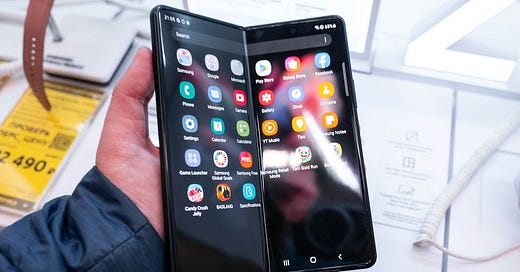Samsung Is Ready To Take Advantage of Its First-Mover Advantage in Foldable Smartphones.
A market sector that is expected to grow tenfold by 2023.
This is a sign that does not deceive. At the end of 2021, two of the world's leading mobile manufacturers, the Chinese Huawei and Oppo, are releasing a foldable smartphone model. This is a new iteration for Huawei, which had been among the pioneers of the sector back in 2019 with its Mate X.
But the release of the Huawei P50 Pocket, despite the American …
Keep reading with a 7-day free trial
Subscribe to Sylvain Saurel’s Newsletter to keep reading this post and get 7 days of free access to the full post archives.




